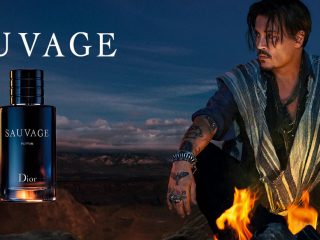Trend forecasting, somewhat predictably, has its roots in the fashion world; a dynamic, rapidly evolving, and consummately subjective industry. Forecasters position themselves at the forefront of the creative wheelhouse, attending fashion shows and tracking the behaviours and fashion choices of forward-thinking influencers. They also review online data and rely on finely honed taste to develop an outline of likely future trends. These outlines are then sold to companies, who use them to inform their product development decisions.
This raises a bit of a paradox, however. If companies are using trend forecasters’ projections to determine the direction of their product lines, wouldn’t that mean that trend forecasters are actually influencers? (Boom. 🤯) After all, storms don’t become more or less likely depending on what the local weatherman says. Yet, trend forecasters can bury whole fashion lines just by predicting they’ll soon fall out of style or, worse, never catch on to begin with. 😨
The subjective nature of creative preference, combined with hypothetical predictions of future trends, makes trend forecasters one of the more unusual types of gatekeepers in the corporate world.
What is a trend forecaster?
Trend forecasters exist in many creative industries, from fashion to interior design, and many forecasters focus on more than one at a time. Trend forecasters must, by the nature of their job, operate with some level of influence and authority in their respective fields. After all, they are taken at their word (and because those words are pre-emptively put into action, they become somewhat self-prophesying), so they need to know what they’re talking about.
Combining polished analytical and creative expertise, trend forecasters examine aggregate data trends to develop reports that signal the direction of an industry based on constantly developing consumer preferences. Leading fashion brands with money to spend on numbers-crunching often purchase these reports to inform the stylistic decisions they make moving forward.
What role does trend forecasting play?
Imagine a Top 40 radio station. In the pre-streaming era of hot hits, particularly in the 80s and 90s, the Top 40 charts were largely determined by a combination of record sales and radio plays. However, radio DJs determined most of what received radio plays, which in turn exposed listeners to certain artists and influenced record sales. Record sales were, in turn, used to inform DJs of what was popular.
While some external factors also contributed (such as artists doing the hard work of touring to get their name out), radio DJs were effectively influencing themselves and driving the trends they had only intended to reflect.
This sort of industry-isolated feedback loop also describes the role of trend forecasters, but in our modern, digital sharing culture, their role in our society is both more sophisticated and more powerful.
Social media influencers have had a profound effect on the power that trend forecasters wield. By collecting the tonnes of aggregated data that influencers produce, trend forecasters can now more convincingly validate their claims. The immediacy of Instagram influencers and Pinterest boards, along with the Google Annual Trends Report, can identify trend changes in their infancy (not unlike how streams and YouTube views now factor into the Top 40 charts).
Prominent forecasting agencies like WGSN now hold enough sway over the entire fashion industry that think-pieces have popped up lamenting the stifling effect they’ve had on creativity itself. After all, is an industry chasing numbers really influencing the direction of the culture or just chasing numbers? In other words, do trend forecasters place fashion designers one step ahead of the curve, or one step behind?

It’s difficult to claim that trend forecasters are perpetuating an insulated corporate feedback loop of self-realising predictions when so much consumer data is pumped into the cycle, but where does that leave the industry’s innovators? Who’s taking the risks?
The accessibility of the internet has created a more diverse and idiosyncratic culture than ever before. Tiny, niche interests find it easier to find like-minded people and remain true to their interests, alleviating the pressure to fit in and adopt a more uniform (read: “basic”) cultural attitude. And yet, at the same time, creative industries like fashion are spending less time differentiating themselves from each other and more time trying to be the first to a singular destination: the most likely largest future trend according to trend forecasters.
Trend forecasters are, ultimately, a form of risk management. Corporations crave predictability, which can prove problematic in a subjectively creative industry. They want to know that what they make will sell. That could mean more quality options, but for fewer people. It could also mean the next innovative breakthrough in the fashion world is kicked a little further down the road. With trend forecasters selling a potentially self-fulfilling prophecy, will we even know the difference?











